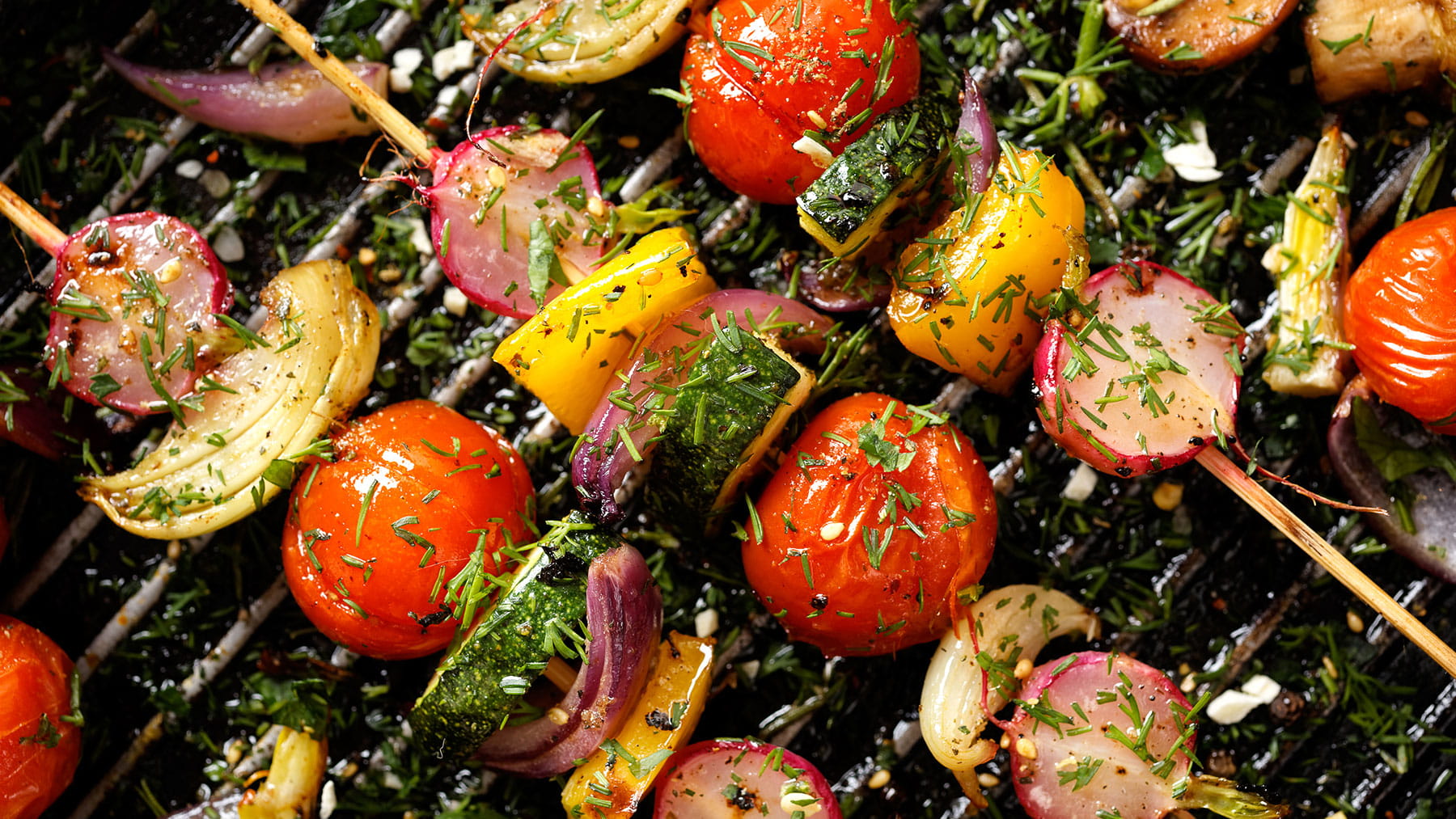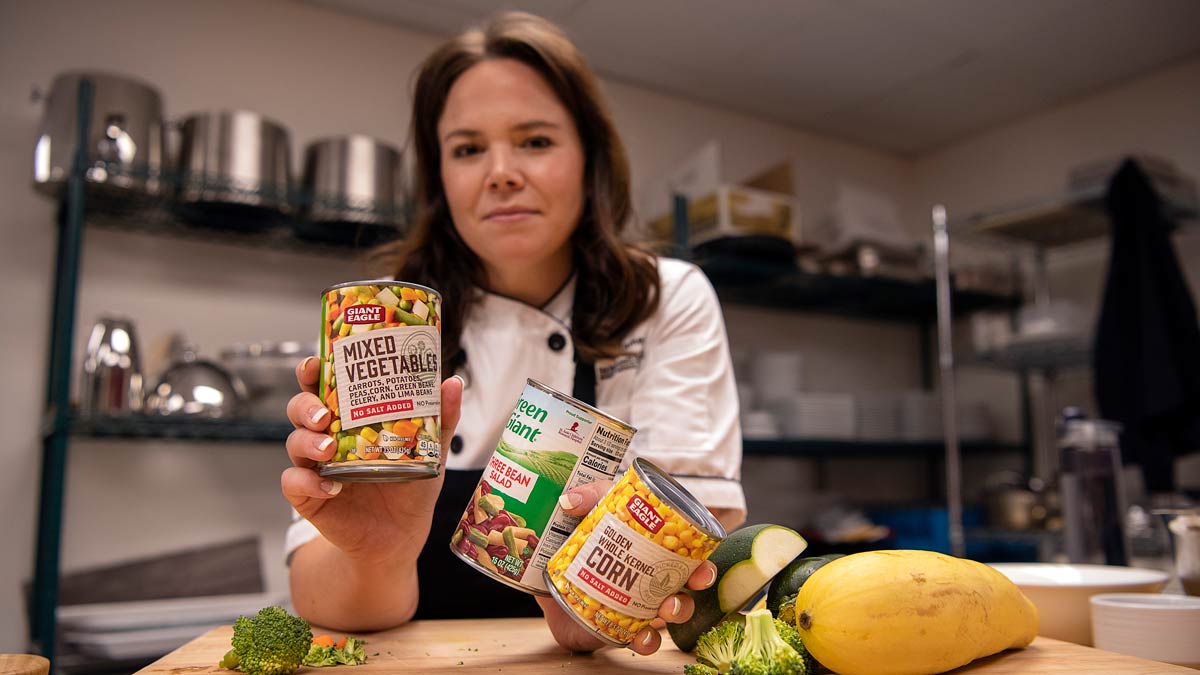10 tips for a healthy summer BBQ

But there’s good news – you don’t have to cut your favorite foods from the standard barbeque menu to make it a healthier affair. Whether you’re the host or a guest, consider trying one, two or three of the following tips to up the health quotient at your next cookout.
1. Invite fruits and vegetables to the party.
There are lots of different ways to add fruits and vegetables to the menu. It can be as simple as having a fruit and vegetable tray with dips that make them more fun to eat. You can grill almost anything, so it can be fun to experiment with grilled fruits and vegetables to see how they turn out. A few to try include asparagus, zucchini, yellow squash, eggplant, corn, bananas, peaches, plums and even watermelon.
A smoothie station is another fun and healthy way to incorporate fruit into the party. Limit the smoothies to one or two fruits and use milk or yogurt for protein. If you’re really watching calories, use a plant-based milk like almond or soy milk, which tend to have fewer calories than cow’s milk, and be sure to drink sensible portions.
Fruit can also enhance the dessert table. A fun and simple fruit dessert is watermelon pizza. Cut a watermelon into slices. Place the slices on a platter to resemble the slices of a pizza. Top the watermelon with whipped cream or yogurt and add fruit, nuts or chocolate chips.
2. Go for whole grains.
If you’re serving burgers and hotdogs, buy whole grain wheat buns. For pasta salad, use whole wheat pasta. If you’re worried about the taste, mix half and half so it’s subtle. Experiment with making whole grain-based salads using quinoa, farrow, millet, barley or whole wheat couscous. You can substitute those grains in your typical pasta salad recipe.
3. Choose your meats wisely.
You definitely don’t have to go meatless to have a healthy barbeque. Try choosing some leaner meat options like skinless chicken breast, lean ground poultry and fish such as salmon or trout. These types of proteins are lower in saturated fat than red meat and fish contain healthy fats that are good for brain and heart health.
If you can’t imagine a barbeque without red meat, opt for leaner cuts like sirloin or tenderloin, or 98 percent lean ground beef – all with a grade of choice or select, rather than prime. Trim visible fat and marbling before grilling. Avoid more processed red meats like brats, hot dogs and sausage, which are often loaded with sodium and saturated fat.
4. Be smart about your grilling technique.
Grilling is a wonderful way to add flavor to foods, but the blackened, charred pieces may contain cancer promoting compounds called heterocyclic amines and polycyclic aromatic amines. HCAs form when proteins cook at high temperatures and PAHs form when meat juices drip onto hot surfaces like charcoal and create smoke. As the smoke wafts around cooking food, its carcinogens stick to the food.
Grill lines are a part of barbequing and with a few simple tweaks, you can keep carcinogen production to a minimum.
- Limit grill time by defrosting meat first.
- Consider making kebabs instead of large pieces of meat to reduce cooking time.
- Trim away visible fat to prevent fat from dripping onto hot coals and creating smoke.
- Use a marinade that contains vinegar or lemon juice. The acidity protects surfaces from HCAs and PAHs.
- Flip grilled meat often to prevent dripping juices.
5. Avoid store-bought marinades and salads.
Store-brought marinades and salads typically have more fat, sodium and sugar, so whenever you can, make them yourself.
The basic components of a marinade are acid, oil and flavorings. Common acid options are citrus juice, vinegar and yogurt. For oils, use canola or safflower or a blend of both. Swap them in for recipes that call for olive oil. These oils have a higher smoke point than olive oil, so they can withstand the high heats of grilling without breaking down, oxidizing and producing carcinogens. Flavorings include onion, shallots, garlic, herbs, salt and soy or Worcestershire sauce.
For coleslaw, potato salad or macaroni salad, use an oil and vinegar base instead of mayonnaise. If you want a bit of creaminess, add a tablespoon of mayonnaise or swap out mayonnaise for plain Greek yogurt.
6. Consider plant proteins.
The main protein star of the barbeque doesn’t have to be meat. Tofu, tempeh steaks, tofu or tempeh kebabs, or black bean burgers are meatless options that are great on the grill. Plant proteins make yummy side dishes like baked beans, three-bean salad and faux chicken salad with chickpeas. You can also throw some beans into your pasta salad to add protein.
7. Hydrate with water instead of sugar sweetened beverages.
Beverages at the barbeque can make calories add up pretty quickly. Drink water instead of lemonade, sweetened iced tea and soft drinks. Water doesn’t have to be boring. You can spice it up by adding herbs, sliced cucumbers or sliced fruit such as oranges, strawberries, peaches, nectarines or pineapple. Fun flavor pairings include watermelon and basil, cucumber and mint, blackberry and sage, and strawberry and mint or basil. If you need a bubbly taste, use seltzer water. You can also make unsweetened iced tea.
8. Build a balanced plate.
When you build a balanced plate, you can have all of your favorite foods, without going overboard. Fill half of your plate with non-starchy vegetables from a variety of dishes at the barbeque, like grilled vegetables and salad. The other half of the plate gets split equally between protein and whole grains or starchy vegetables. If they’re serving burgers and kabobs, maybe you have half of each meat. For the grains or starchy vegetables, consider getting a little bit of potato salad, a little bit of pasta salad and half a roll. Using this method, you can sample multiple dishes without making several trips to the buffet.
9. Practice mindful eating.
Mindful eating techniques can prevent you from overeating, as well as help you have a more enjoyable eating experience. Pay attention to your food as you’re eating. Notice the colors, textures, smells and flavors. Chew slowly and follow each bite down your throat and into your stomach. When you’re halfway through your meal, pause to see if you’re full. Give yourself permission to stop if you’re full and to keep eating if you’re still hungry. Do this again when you’re three-quarters of the way through your meal.
It typically takes 20 minutes for your brain to catch up with your body. If you’ve finished your plate, it can be really tempting to go back for seconds. Instead, wait 20 minutes to see if you really have room for a dessert. It can keep you from making yourself uncomfortable.
10. Plan activities that don’t revolve around food.
When the main event at the barbeque is food, it can make it easier to overeat. In addition to food, have some board games or outside games like corn hole, kickball, volleyball or badminton available. Invite everyone to go for a walk around the neighborhood or a local park. The point isn’t to burn off what you ate, but to take the focus off food so you and your guests don’t find yourselves mindlessly grazing on pretzels or chips because there isn’t anything else to do.
Mary Mosquera Cochran is a registered dietitian at The Ohio State University Wexner Medical Center.




